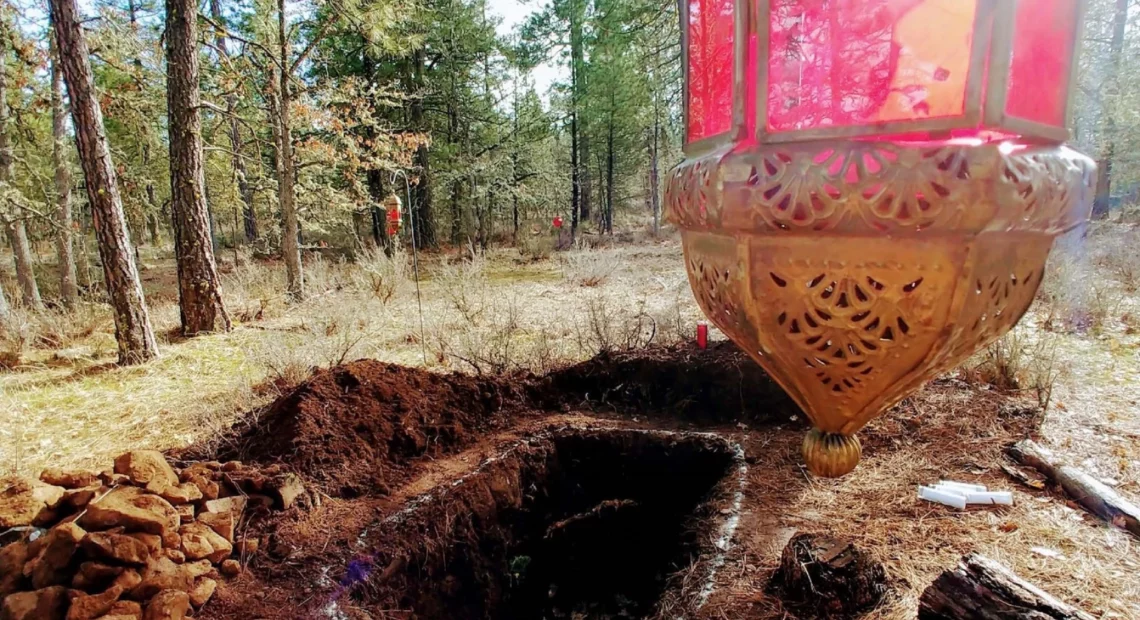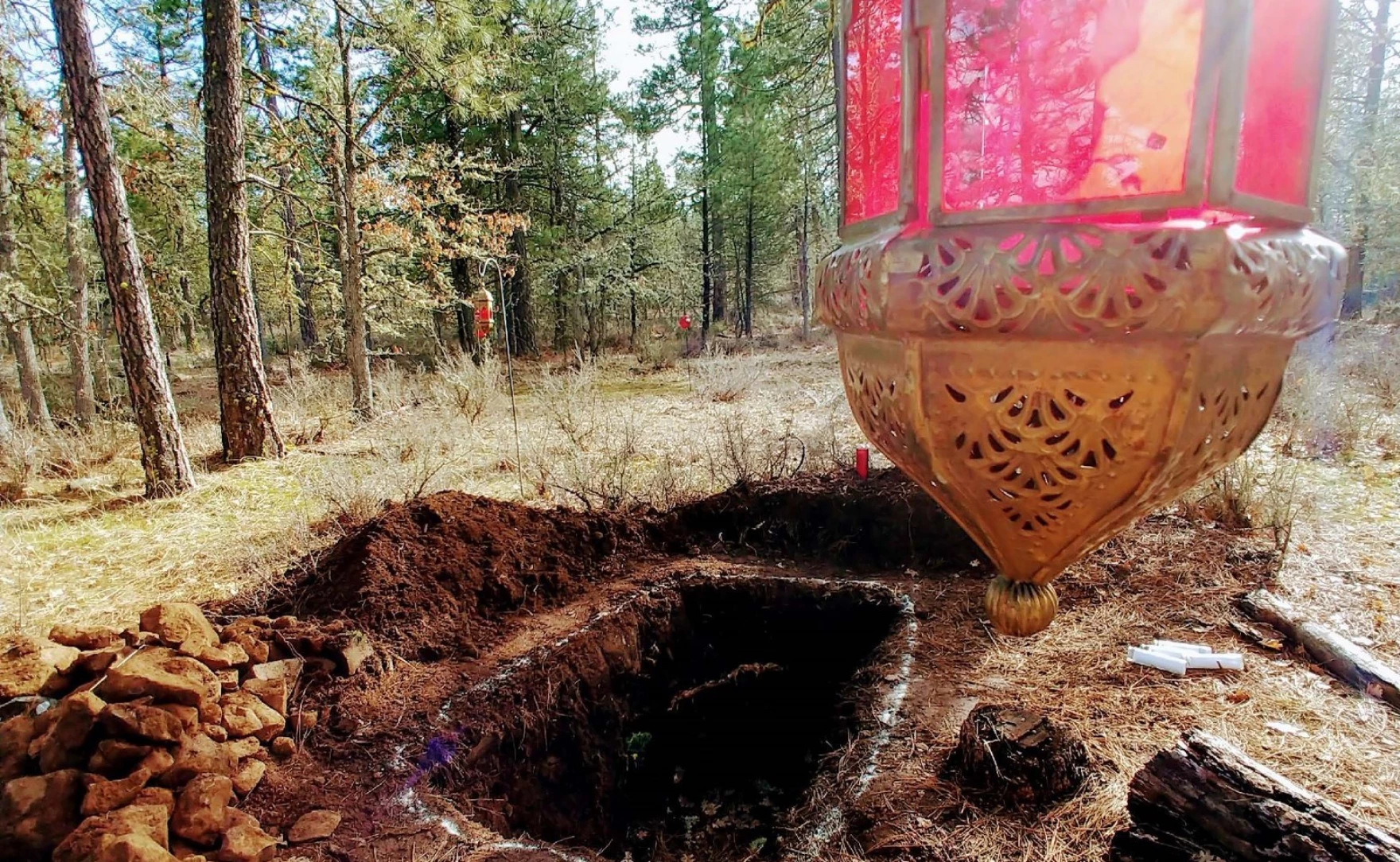
DIY Funerals: Your Family Can Be Your Own Funeral Director, If You Want
Listen
Read
As people gather for the holidays, some use the opportunity to discuss difficult but important family topics. That includes what folks want to happen when they die and how they want to be remembered. Often when a death occurs, the next of kin hands the arrangements over to a funeral director in the moment of grief and stress. But some families are choosing to stay with the body and handle as much as they can themselves.
Zaakera Stratman’s daughter Mikaela, a University of Washington student, died unexpectedly at age 22 from a rare type of acute brain inflammation in 2018. Mikaela’s death left the family in shock. But despite her grief, Zaakera resisted simply turning over the funeral arrangements to a professional.
“It was very important to me that we bury her within 24 hours of her passing,” Stratman explained in an interview.
She and her family carefully worked out a plan back-timed from where Mikaela’s body would be laid to rest. It included details for how the family would take care of Islamic traditions of prayers and washing of the body. And the plan covered how the family would shroud and transport the body between locations.
But Stratman said she encountered numerous barriers. The Seattle hospital at first wouldn’t release Mikaela’s body directly to the family. Funeral services said a needed transport permit and notarized paperwork would take days. Pleading for workarounds added tears and costs.
“It was unnecessary stress and anxiety,” Stratman recalled. “The laws didn’t require any of that. It was insult added to injury, so to speak.”
Stories like hers inspired an informal network of consumer activists, bereaved parents and green burial advocates to take action. They are building websites to advise do-it-yourselfers and provide in-service trainings to caregivers.
“The heart of consumer empowerment here is recognizing that you actually can do it yourself, that the legal permission is there. The information is there,” said Holly Pruett of Portland.
Pruett worked on a home funeral website specific to Oregon and followed up with another online guide for Washington state that went live earlier this year. Professionally, she is a civil celebrant, which means Pruett marries and buries people or alternatively acts as a consultant.
“Oftentimes they learn after the fact that, for example, they might have been able to be present when the cremation occurred,” Pruett said. “Or they might have been able to wash their loved one’s body themselves. Or that they could have actually provided transportation in their SUV, van or their pickup truck. Or kept the body at home for a few days.”
Pruett said next-of-kin who were active participants in laying their loved one to rest discovered it helped them move through the grief process and created a lasting memory.
The funeral industry has taken note of the interest in do-it-yourself funerals. Rob Goff, the executive director of the Washington State Funeral Directors Association, said consumers are embracing a widening set of options. These include not only DIY funerals, but also recently legalized body composting and flameless cremation (technically known as alkaline hydrolysis), and solidifying cremated remains into stones.
“The funeral service profession is pivoting to be able to accommodate the needs and the wants and desires of the families they are serving,” Goff said in an interview.
Goff also runs a funeral planning and burial pre-purchase agency in Spokane Valley that offers alternatives to traditional burial services.
“A lot of families will come in with the idea that they do want to do it themselves,” Goff said. “After talking, they start to realize there is a lot that is involved with planning a gathering. Funerals typically take place within a few days after death, if not immediately after death. Funeral directors are very capable and used to making these plans and fulfilling these ideas on a quick and timely basis.”
Goff said he understands why some families choose a home funeral.
“The funeral director’s role is to facilitate. It’s not to lead. It’s not to have a funeral at the funeral home per se,” Goff said. “A good funeral provider will say, ‘Yes, let’s figure how we do that.'”
According to the National Funeral Directors Association, this year’s median cost of a funeral with a viewing and burial was $7,848. The more popular choice of a funeral with cremation cost around $6,971.
Cost saving could be a motive to go the DIY route, but it doesn’t seem to be the primary factor for people who have consulted with Pruett or Goff.
“Most folks are not doing it to save money,” observed Goff. “Most folks are doing it because they have something specific they want to have done.”
Pruett said surviving family members who essentially chose to be their own funeral directors found it was more meaningful to have “hands-on engagement” and appreciated having more time with the deceased before saying goodbye.
Goff and Pruett both noted that sitting with the deceased at home or holding a viewing or service at your place is not a new thing, even though “home funeral” may be a fresh entry in guide glossaries.
“It’s not a new concept, it’s just a new name,” Goff said.
Families cared for and buried their own dead for millennia until the U.S. funeral industry came into its own in the 20th century.
No matter what your funeral preferences may be, a piece of universal advice is to talk over your wishes with people you trust and write them down in advance.
One other thing to know, a home funeral does not equal home burial. Theoretically, you could lay grandma to rest on the back forty. But it requires the plot be permanently designated as a family cemetery, which can take a long time to achieve, if it is even possible at the desired location.
















